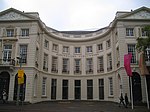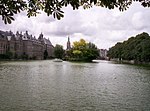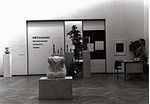Mauritshuis
1822 establishments in the NetherlandsArt museums and galleries in the NetherlandsArt museums established in 1822Buildings of the Dutch Golden AgeHouses completed in 1641 ... and 5 more
Houses in the NetherlandsMauritshuisMuseums in The HagueNational museums of the NetherlandsNeoclassical architecture in the Netherlands

The Mauritshuis (Dutch pronunciation: [ˈmʌurɪtsɦœys]; English: Maurice House) is an art museum in The Hague, Netherlands. The museum houses the Royal Cabinet of Paintings which consists of 854 objects, mostly Dutch Golden Age paintings. The collection contains works by Johannes Vermeer, Rembrandt van Rijn, Jan Steen, Paulus Potter, Frans Hals, Jacob van Ruisdael, Hans Holbein the Younger, and others. Originally, the 17th century building was the residence of count John Maurice of Nassau. It is now the property of the government of the Netherlands and is listed in the top 100 Dutch heritage sites.
Excerpt from the Wikipedia article Mauritshuis (License: CC BY-SA 3.0, Authors, Images).Mauritshuis
Korte Vijverberg, The Hague Centrum
Geographical coordinates (GPS) Address External links Nearby Places Show on map
Geographical coordinates (GPS)
| Latitude | Longitude |
|---|---|
| N 52.080556 ° | E 4.314444 ° |
Address
Mauritshuis (Mauritshuis, Het Koninklijk Kabinet van Schilderijen)
Korte Vijverberg 8
2513 AB The Hague, Centrum
South Holland, Netherlands
Open on Google Maps










